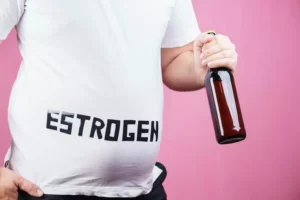- Sepetiniz boş
- Alışverişe Devam
How to identify, treat and prevent opioid use disorder

This increased risk is likely due in part to shared genetic factors, but it may also be related to environment, lifestyle, and other nongenetic influences that are shared by members of a family. WHO supports countries in their efforts to ensure rational use of opioids and their optimal availability for medical purposes and minimization of their misuse and non-medical use. Worldwide, about 296 million people (or 5.8% of the global population aged 15–64 years) used drugs at least once in 2021. Most people dependent on opioids used illicitly cultivated and manufactured heroin, but the proportion of those using prescription opioids is growing. If you’re currently taking prescription opioids and are concerned you may be developing a use disorder, talk to your healthcare provider immediately. Instead, healthcare providers rely on a thorough evaluation of your medical history and behaviors surrounding opioid use.
How effective are medications to treat opioid use disorder?
- Additionally, the healthcare team should empower family members and members of the lay public to support the tenets of OUD care.
- Medications and behavioral therapies can help people with OUD stop using opioids and support them in their recovery.
- Naloxone can reverse the effects of an opioid overdose if it’s given to the person quickly.
The medications methadone and buprenorphine can be used to help reduce the cravings for opioids and prevent withdrawals. They must be given in combination with talk therapy and their dose is decreased over time. The length of treatment for OUD should also be individualized for each patient. Some clinicians attempt to discontinue medications for OUD after 1 year of treatment. Other clinicians suggest that treatment should be lifelong due to the risk of relapse and overdose death after patients stop treatment.
Are people seeking treatment for opioid addiction?
The Affordable Care Act has also helped in major ways, starting by requiring that private insurance plans cover substance use disorder services as part of essential health benefits. It also has facilitated expansion of Medicaid, signs of opioid addiction the single largest payer of opioid use disorder services. The report notes that states that have expanded Medicaid eligibility have shown evidence of decreased overdose deaths and increased receipt of treatment.
Deterrence and Patient Education

Its ability to cause euphoria contributes to its potential for addiction. Overdose Data to Action (OD2A) is a cooperative agreement that provides funding to 90 health departments under two distinct OD2A programs (State and Local) to reduce drug overdoses and the impact of related harms. OD2A focuses on understanding and tracking the complex and changing nature of the drug overdose crisis by seamlessly integrating data and prevention strategies. It does not turn the opioid receptor on, but instead blocks the euphoric and sedative effects of opioids. A patient’s system must be completely free of all opioids before beginning to take naltrexone. Training in administration of naloxone for a loved one with substance use disorder is offered in most communities.
- OUD typically involves periods of exacerbation and remission, but the vulnerability to relapse occurs throughout a patient’s lifetime.
- Rising death trends are linked to drivers such as the anxiety and isolation of COVID-19 as well as continued lack of access to quality care and prevention.
- Researchers suspect that differences in the receptors’ structure and function influence how the body responds to opioids.
- Even people who use opioids only as prescribed by a physician can develop OUD.
- If you or someone you know is experiencing OUD, treatment is available.
Overdose Data to Action
They can become drowsy and sleepy, or may also experience the opposite in losing the ability to sleep well. Depression and anxiety https://ecosoberhouse.com/ are often experienced by people who abuse opioids. Opioid abuse can cause the brain and body to become overly sensitive to pain.

How do opioids work?
Buprenorphine and Naltrexone Compared

How to identify, treat and prevent opioid use disorder

